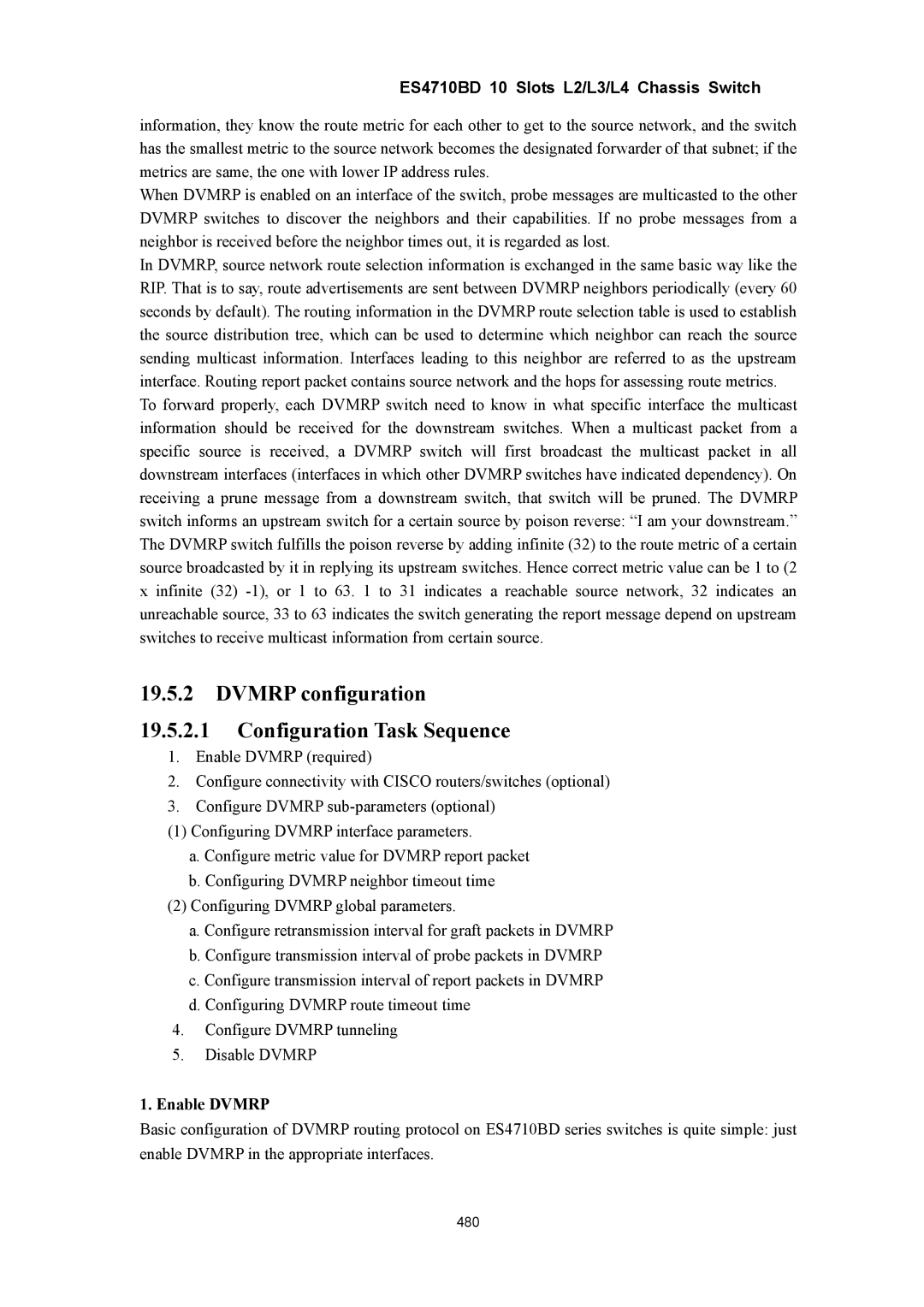ES4710BD 10 Slots L2/L3/L4 Chassis Switch
information, they know the route metric for each other to get to the source network, and the switch has the smallest metric to the source network becomes the designated forwarder of that subnet; if the metrics are same, the one with lower IP address rules.
When DVMRP is enabled on an interface of the switch, probe messages are multicasted to the other DVMRP switches to discover the neighbors and their capabilities. If no probe messages from a neighbor is received before the neighbor times out, it is regarded as lost.
In DVMRP, source network route selection information is exchanged in the same basic way like the RIP. That is to say, route advertisements are sent between DVMRP neighbors periodically (every 60 seconds by default). The routing information in the DVMRP route selection table is used to establish the source distribution tree, which can be used to determine which neighbor can reach the source sending multicast information. Interfaces leading to this neighbor are referred to as the upstream interface. Routing report packet contains source network and the hops for assessing route metrics.
To forward properly, each DVMRP switch need to know in what specific interface the multicast information should be received for the downstream switches. When a multicast packet from a specific source is received, a DVMRP switch will first broadcast the multicast packet in all downstream interfaces (interfaces in which other DVMRP switches have indicated dependency). On receiving a prune message from a downstream switch, that switch will be pruned. The DVMRP switch informs an upstream switch for a certain source by poison reverse: “I am your downstream.” The DVMRP switch fulfills the poison reverse by adding infinite (32) to the route metric of a certain source broadcasted by it in replying its upstream switches. Hence correct metric value can be 1 to (2 x infinite (32)
19.5.2DVMRP configuration
19.5.2.1Configuration Task Sequence
1.Enable DVMRP (required)
2.Configure connectivity with CISCO routers/switches (optional)
3.Configure DVMRP
(1)Configuring DVMRP interface parameters.
a.Configure metric value for DVMRP report packet
b.Configuring DVMRP neighbor timeout time
(2)Configuring DVMRP global parameters.
a.Configure retransmission interval for graft packets in DVMRP
b.Configure transmission interval of probe packets in DVMRP
c.Configure transmission interval of report packets in DVMRP
d.Configuring DVMRP route timeout time
4.Configure DVMRP tunneling
5.Disable DVMRP
1.Enable DVMRP
Basic configuration of DVMRP routing protocol on ES4710BD series switches is quite simple: just enable DVMRP in the appropriate interfaces.
480
